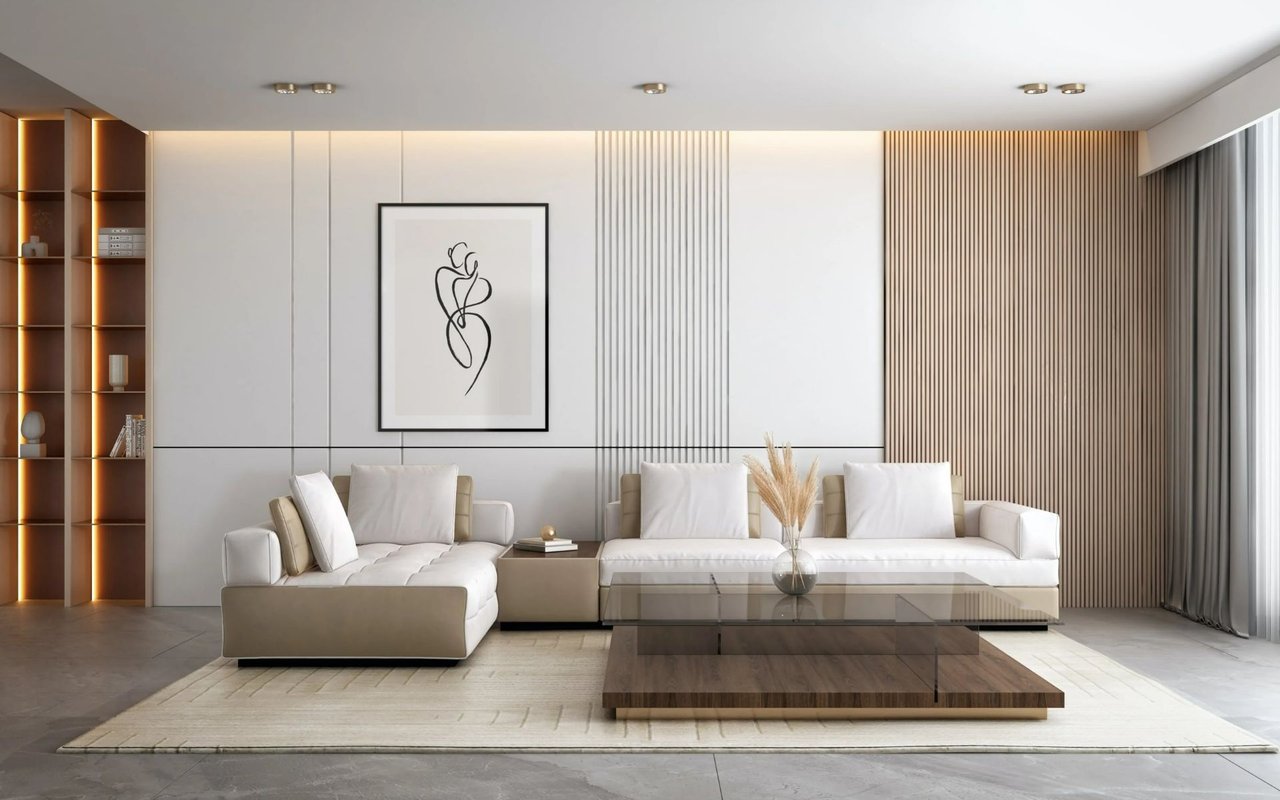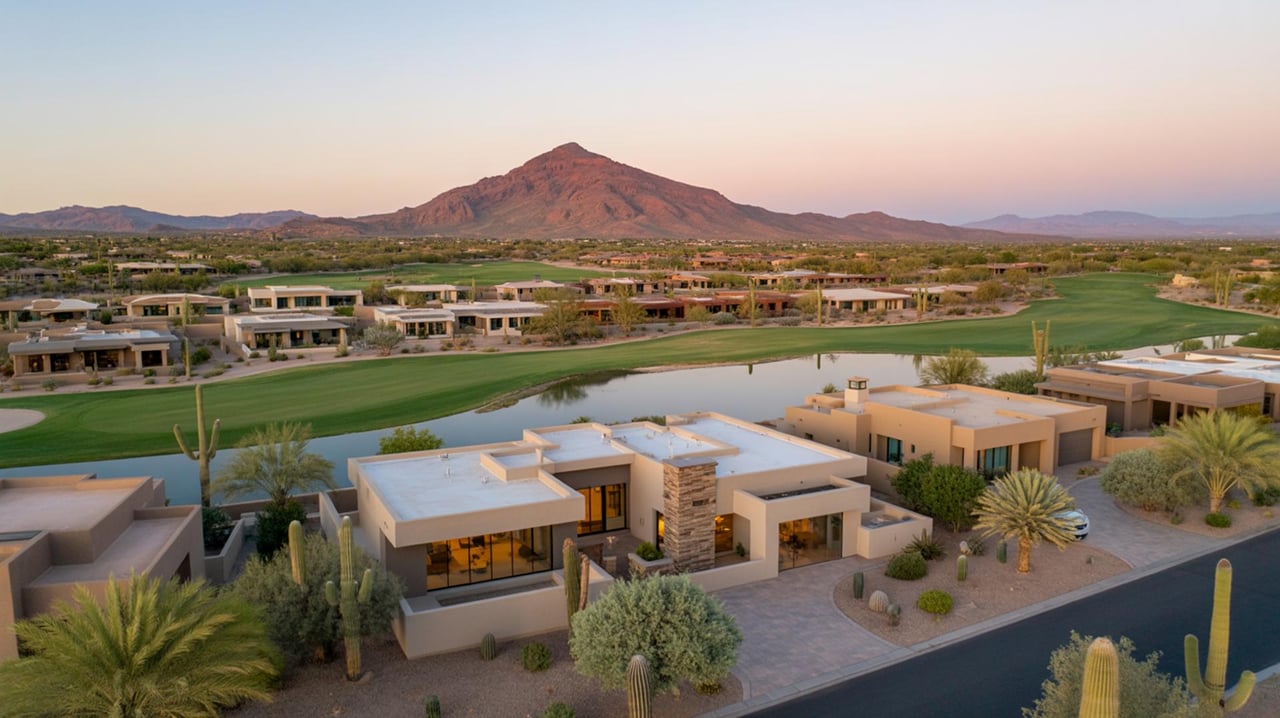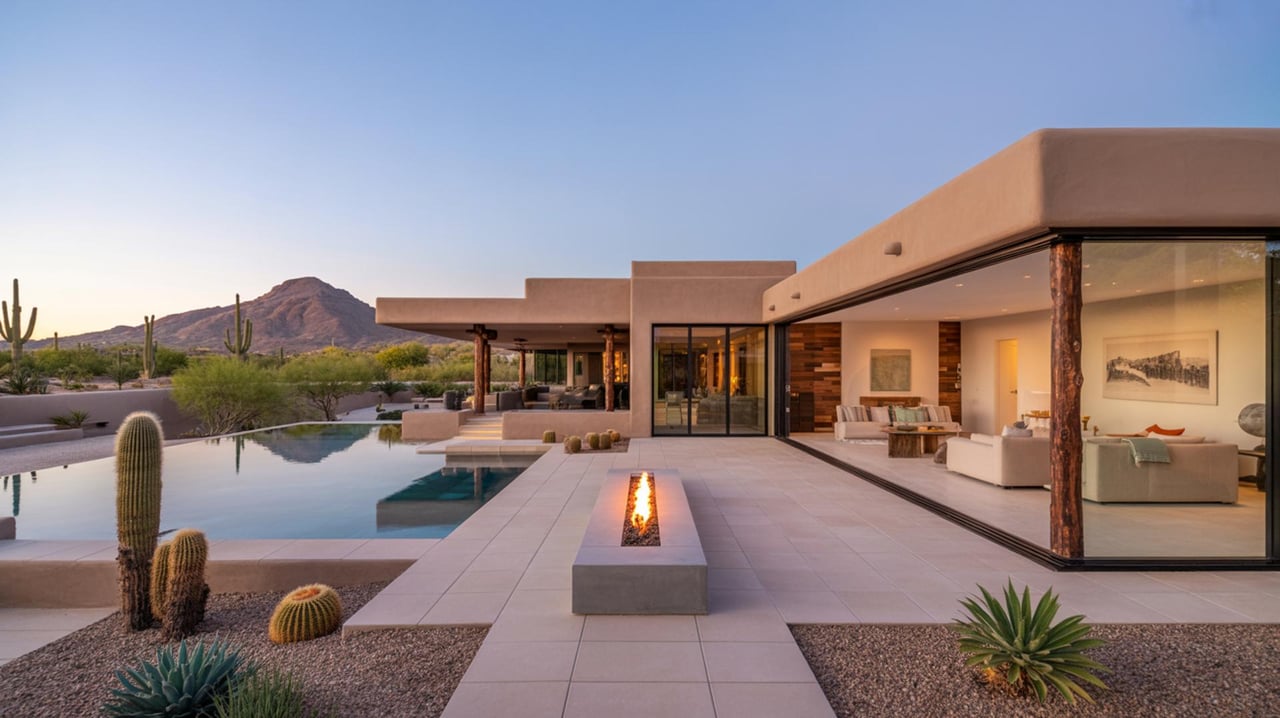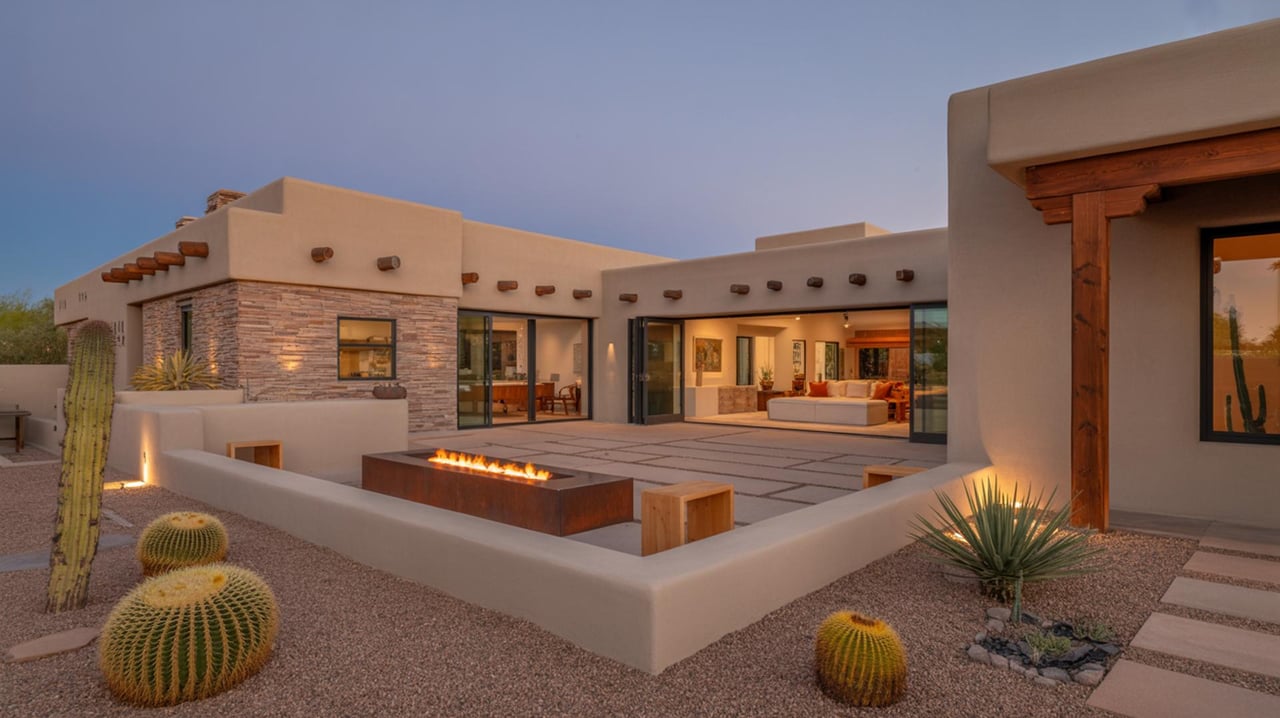Arizona’s unique desert climate significantly influences home design and maintenance needs. With its hot summers, monsoon storms, and flash flooding, occasional cold snaps, and snow in the high country, homeowners must adapt their properties to withstand these extremes. Understanding the impact of Arizona’s weather can help you choose the right materials, design features, and maintenance strategies to keep your home comfortable and durable.
1. Designing for Extreme Heat
Arizona’s desert climate is known for scorching summers, with temperatures regularly exceeding 110°F. This extreme heat affects home design in several ways:
- Energy-Efficient Cooling Systems: Homes need robust HVAC systems to keep interiors cool. High-performance insulation and energy-efficient windows can reduce cooling costs.
- Roofing Materials: Light-colored or reflective roofing materials, like tiles or metal roofs, help minimize heat absorption, keeping homes cooler.
- Shaded Outdoor Areas: Features like covered patios, awnings, and strategically planted trees provide shade and reduce the heat load on a house.
2. Addressing Monsoon Season Challenges
Arizona’s monsoon season brings intense rain, wind, and dust storms, which can challenge home durability.
- Roof Maintenance: High winds and heavy rains can damage roofs. Regular inspections and repairs help prevent leaks and extend roof life.
- Waterproofing: Proper grading around the home, as well as sealing around windows and doors, is essential to prevent water intrusion during monsoon storms.
- Drainage Systems: Functional gutters and downspouts direct water away from the foundation, reducing the risk of flooding or erosion.
3. Protecting Against Dust and UV Exposure
The desert environment produces high levels of dust and UV radiation, which impact both exterior and interior maintenance.
- Windows and Doors: UV-resistant coatings on windows protect interiors from fading and reduce heat gain. Proper sealing keeps dust from infiltrating the home.
- Exterior Paint and Materials: Durable, UV-resistant paints and materials help protect against cracking and fading caused by prolonged sun exposure.
- Filters and Air Quality: Frequent cleaning and replacement of air filters combat dust accumulation, improving indoor air quality.
4. Winter Considerations
Arizona can experience cold snaps and freezing temperatures in the low desert, as well as snowfall in the northern areas.
- Insulation: Adequate insulation ensures homes remain comfortable during occasional colder months.
- Pipe Protection: Properly insulated pipes prevent freezing and potential bursting during cold spells.
Conclusion
Arizona’s weather demands thoughtful home design and proactive maintenance. Features like energy-efficient cooling systems, UV-resistant materials, and robust drainage solutions are essential for managing the state’s diverse climate. By addressing these factors, homeowners can ensure their properties remain comfortable, efficient, and well-protected year-round.



